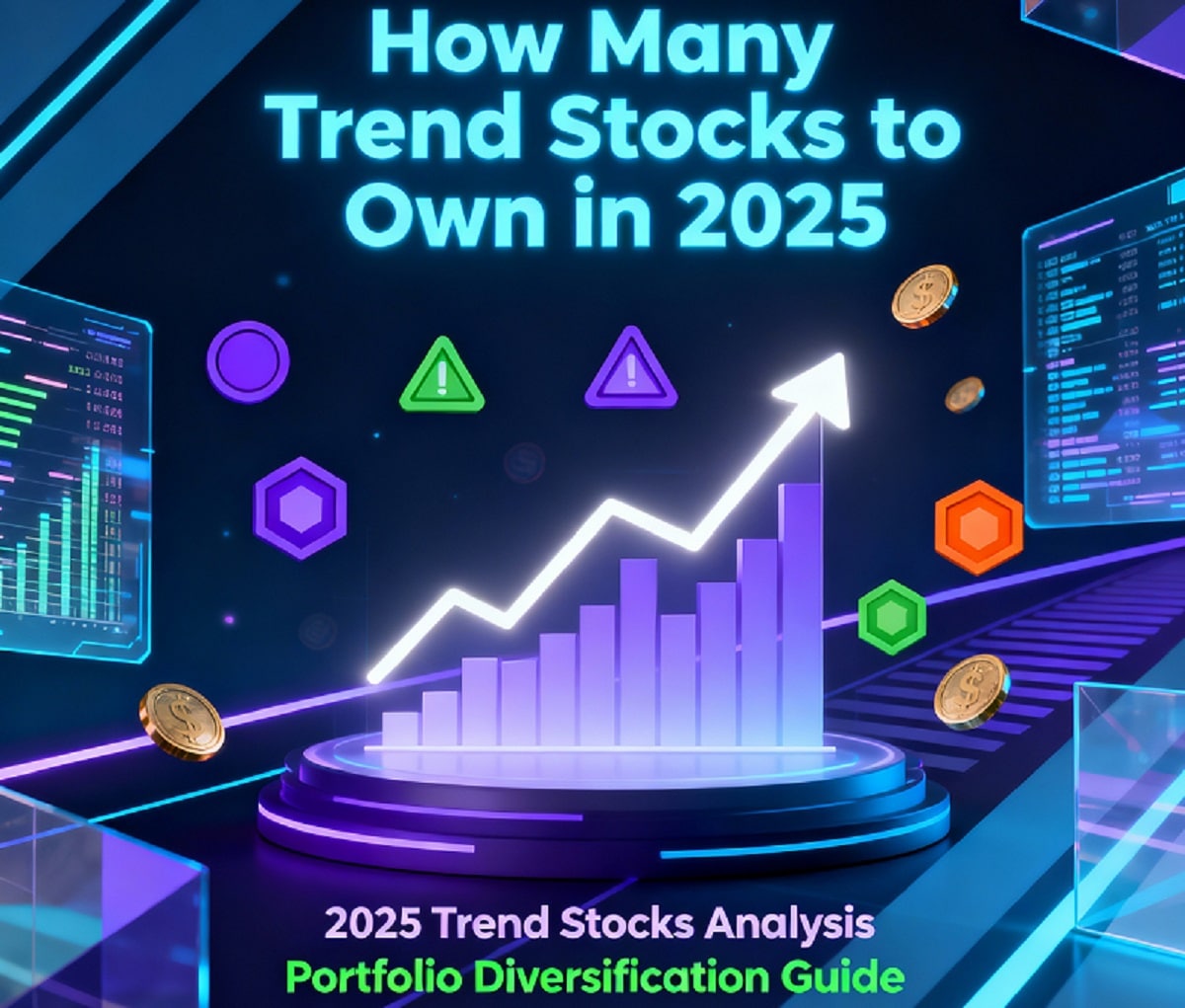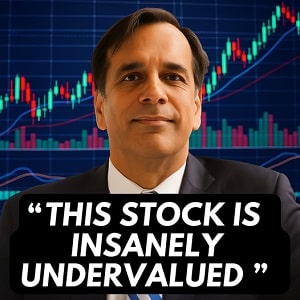If 2023 and 2024 were the years of hype, then 2025 is shaping up to be the year of hard choices.
Everywhere you look, there’s a “can’t-miss” opportunity: AI, quantum computing, green metals, space tech, biotech, and energy storage.
Each sector has its own evangelists promising the next NVIDIA or the next Tesla.
But the problem isn’t finding trends — it’s deciding how many of them belong in your portfolio.
Buy too few, and you risk missing the next big winner. Buy too many, and your portfolio becomes a tangled web of volatility.
That’s where smart strategy — not hype — separates successful investors from emotional traders.
And that’s exactly what veteran macro investor Eric Fry teaches in his Sell This, Buy That approach: balance bold opportunity with disciplined positioning.
In this article, we’ll break down:
-
How to define a “trend stock” in 2025
-
The difference between participation and overexposure
-
How many high-growth stocks belong in a healthy portfolio
-
A step-by-step framework to size and manage your positions
Let’s dig in.
Key Takeaways
- Trend stocks are essential for long-term growth — but they should be limited to a defined slice of your portfolio.
- Position sizing, not stock-picking, determines most investor success.
- Eric Fry’s “Sell This, Buy That” method favors contrarian entries into megatrends, not overhyped peaks.
- Most investors thrive by holding 5–8 high-conviction trend stocks, not 25 speculative plays.
- Rebalancing and profit-taking keep your portfolio from being hijacked by short-term fads.
What Exactly Is a “Trend Stock”?
A trend stock isn’t just any fast mover. It’s a company riding a long-term, transformative shift in the global economy.
These are the stocks tied to what Eric Fry calls “megatrends” — unstoppable forces changing the way humanity works, moves, and spends.
Some examples from recent years:
-
AI acceleration — from NVIDIA to smaller plays like Super Micro Computer.
-
Clean energy transformation — lithium, copper, and battery supply chains.
-
Reshoring and automation — companies building the new U.S. industrial backbone.
-
Quantum and advanced computing — the next layer beyond AI.
These stocks are exciting because they live in exponential markets — but that’s also what makes them dangerous. When retail traders pile in late, volatility spikes. When sentiment cools, prices fall twice as fast.
That’s why Eric Fry’s central principle applies here:
“It’s not about owning every trend — it’s about owning the right amount of the right ones.”
Why Portfolio Balance Matters More Than Ever
In 2025, markets aren’t moving in sync.
AI and semiconductor stocks might soar one week while green energy or biotech slumps. Interest rates and geopolitical headlines whip sectors back and forth.
This uneven backdrop means balance isn’t optional — it’s survival.
According to Eric Fry’s decades of macro experience (from Asia’s rise in the 1990s to the tech and commodity cycles of the 2000s), a healthy portfolio has three engines:
-
Core stability — diversified blue chips, cash flow plays, and dividend stocks.
-
Growth exposure — select trend stocks tied to major innovations.
-
Contrarian hedge — out-of-favor assets that thrive when the crowd panics.
Trend stocks fit beautifully into the middle layer. But they should never dominate your portfolio.
“Think of trend investing like seasoning,” Fry says.
“The right amount makes the meal extraordinary. Too much, and it overwhelms everything else.”
How Many Trend Stocks Should You Own?
Let’s get concrete. Fry’s approach — based on decades of market data — generally lands on 5 to 8 trend stocks for most investors.
Here’s why that range works:
It’s Diversified Enough to Capture Big Winners
With 5–8 trend plays, you have exposure to multiple high-growth themes — AI, energy, biotech, quantum, etc. You don’t need to predict which one will explode first; you simply ensure you’re present in the right arenas.
It’s Small Enough to Manage Volatility
Each high-growth name carries more risk. Owning too many trend stocks makes it impossible to monitor earnings, news, and catalysts effectively. Five to eight means you can actually follow your investments — not just collect tickers.
It Keeps You Emotionally Balanced
Too many “hot” names make portfolios feel like casinos. A defined structure keeps you grounded, focused on process, not impulse.
It Matches How Winners Are Distributed
In most bull markets, a handful of stocks drive most of the gains. You don’t need to own 50; you just need exposure to the few that dominate.
Position Sizing – The Hidden Lever of Success
Even more important than how many trend stocks you own… is how much you own of each.
Most investors blow up not because they chose bad companies, but because they sized them badly.
Here’s a simple sizing framework adapted from Fry’s macro approach:
| Position Type | % of Portfolio | Example |
|---|---|---|
| Core (dividend, blue-chip) | 50–60% | Microsoft, ETFs, energy majors |
| Trend stocks | 20–30% | AI, green energy, biotech |
| Contrarian plays / hedges | 10–20% | Commodities, gold, defense |
Within that 20–30% trend allocation, you can divide it evenly among 5–8 names. That means each one gets around 3–5% of your total portfolio.
That way, even if one trend stock tanks, you’re not wrecked. And if one explodes 500%, it moves the needle meaningfully.
The “Sell This, Buy That” Discipline
Eric Fry’s investment method isn’t just about finding the next big thing — it’s about rotating intelligently.
When hype peaks in one sector, Fry recommends “selling this” — trimming the crowded trade — and “buying that” — quietly loading up on the next undervalued trend.
For example:
-
When AI names trade at nosebleed valuations, shift attention toward quantum computing or industrial automation.
-
When energy metals surge, rotate into overlooked clean-tech enablers like power grid software or advanced materials.
This discipline keeps investors ahead of the herd, not chasing it.
“Trends don’t die,” Fry explains. “They just change hands.”
Real-World Application – Building a 2025 Trend Portfolio
Here’s a sample structure for a balanced, growth-oriented portfolio:
| Sector | Example Focus | Allocation |
|---|---|---|
| Core Tech | Cloud, Semiconductors | 25% |
| AI & Automation | Smaller AI infrastructure firms | 10% |
| Clean Energy / EV | Battery, copper, smart grid | 10% |
| Quantum Computing | Early-stage innovators | 5% |
| Contrarian Commodities | Uranium, gold | 10% |
| Cash / Stable Income | Treasuries, dividends | 40% |
This setup gives you exposure to innovation without overexposing you to hype cycles.
And it’s exactly the type of balanced structure Fry’s research service — Eric Fry’s Investment Report — helps investors build month by month.
Handling Volatility and Risk
Let’s be clear: trend stocks will swing wildly. That’s part of the game. The key is to have rules before the chaos hits. Here are Fry-style risk management habits:
-
Use trailing stops — lock in gains automatically if a stock drops 20–25% from its peak.
-
Scale in, not all at once — buy partial positions as trends confirm.
-
Rebalance quarterly — if one stock balloons to 20% of your portfolio, trim it.
-
Stay data-driven — follow earnings and adoption metrics, not just headlines.
The Psychology of Trend Investing
Great investors aren’t fortune-tellers — they’re patient learners.
Owning trend stocks tests your psychology. There will be weeks when everything surges and you feel brilliant… followed by sharp pullbacks that make you question everything.
That’s when the process matters most.
Fry’s philosophy helps investors stay calm:
“Discipline is the real alpha. It’s what lets you survive long enough to profit from being right.”
How Eric Fry Helps You Stay Ahead
Through Sell This, Buy That, Fry gives investors:
-
Monthly intelligence on macro trends before they hit CNBC
-
Specific stock recommendations with clear buy/sell ranges
-
Position sizing guidance and exit strategies
-
Contrarian opportunities hiding in plain sight
It’s not about guessing headlines. It’s about anticipating inflection points — when one trend overheats and another quietly begins.
That’s where the next 10x winners are born.
Final Thoughts
2025 will reward investors who can think both boldly and rationally. Owning trend stocks isn’t about chasing fads — it’s about identifying sustainable innovation early, and sizing it intelligently.
That’s what Eric Fry does best — teaching investors to rotate into opportunity before the crowd catches on.
So if you’re wondering how many trend stocks to own this year, the answer isn’t a number — it’s a mindset:
Stay balanced. Stay strategic. And stay ready for the next “Buy That” moment before the market sees it coming.
FAQ: How Many Trend Stocks Should You Own
How many trend stocks should I own in 2025?
Most investors do best with 5–8 high-conviction trend stocks. Enough to catch major innovations, few enough to manage risk.
How much of my portfolio should go into trend stocks?
Keep trend stocks around 20–30% of total holdings. Balance the rest with core and contrarian assets.
What if I already own several large-cap AI stocks?
That’s fine — but complement them with under-the-radar opportunities in new sectors like quantum or automation to diversify your trend exposure.
How do I know when to sell?
How do I know when to sell?
Where can I learn more about Fry’s system?
Visit Eric Fry’s Sell This, Buy That Strategy Revealed for access to Fry’s latest research, trade alerts, and educational briefings.

































